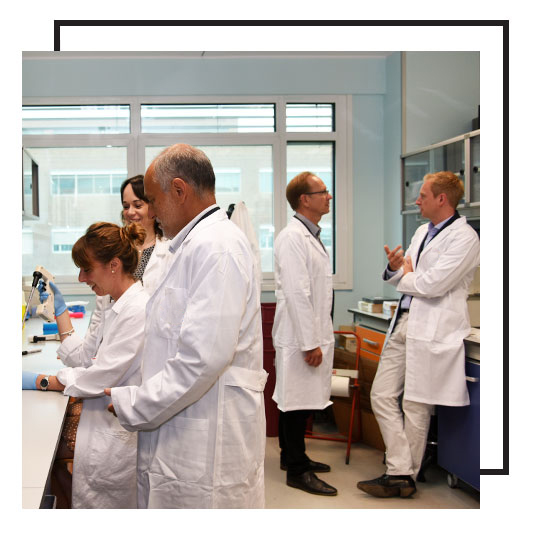Why target growth factor pathways for fibrotic indications?
Growth factor pathways coordinate broad morphogenic and tissue repair programs, and can be leveraged to profoundly alleviate tissue injury, fibrotic remodeling, and organ failure. Because growth factors possess such broad activity, it is important to have a deep understanding about how to modulate them, and how to design small molecules or antibodies to do this.
This is where we leverage our deep understanding of growth factor biology and employ smart small molecules inhibiting the TGFβ pathway and agonistic antibodies stimulating the HGF/MET pathway. Our pipeline consists of unique assets with a novel mode of action against well-validated and potentially disease-modifying targets with the aim to repair tissue injury, resolve fibrosis and restore organ function in patients with high unmet medical need.
Why are we targeting the TGFẞ pathway?
Inhibition of the intracellular kinase domain of the TGFß receptor (ALK5) is desirable in the treatment of fibrotic disorders for its potential in blocking canonical and non-canonical TGFß signaling. Traditional TGFß inhibitor approaches have been hampered by toxicity effects whereas systemic TGFß inhibition approaches have shown anti-fibrotic effects in the skin, kidney and lung fibrosis.
Armed with this knowledge, we have created organ-restricted ALK5 inhibitors to leverage blockade of the TGFß pathway while avoiding systemic exposure. This organ-restricted approach could be the key to unlocking treatment options for a range of diseases.

Why are we targeting the HGF/MET pathway?
While the therapeutic and regenerative potential of HGF has been recognized since its discovery in the 1990s, translation of this growth factor to the clinic has been challenging, mainly due to its short plasma half-life as well as the difficulty to manufacture clinical-grade molecules cost-effectively.
Using argenx’s validated SIMPLE antibodyTM technology platform, we have created a set of full and partial MET-agonistic antibodies, with the goal of allowing us to achieve the desired activation of the HGF/MET pathway in patients.


